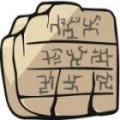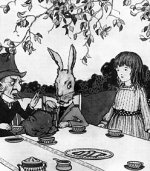
Worksheets and No Prep Teaching Resources
Reading Comprehension Worksheets
History of Books and Writing

History of Books and Writing
 Worksheets and No Prep Teaching Resources Reading Comprehension Worksheets History of Books and Writing |
 History of Books and Writing |
| edHelper's suggested reading level: | grades 9 to 12 | |
| Flesch-Kincaid grade level: | 8.89 |
|
Unbirthday Parties and Other Celebrations from Children's Books
By Colleen Messina |

|
 1 If you go to Amazon.com, you can choose from 32,000 children's books. You can pick from board books, pop-up books, cloth books, mysteries, fiction, and thrillers. Today, children's books are a special, competitive market in the publishing world. It is hard to imagine that children had no books of their own until about 250 years ago.
1 If you go to Amazon.com, you can choose from 32,000 children's books. You can pick from board books, pop-up books, cloth books, mysteries, fiction, and thrillers. Today, children's books are a special, competitive market in the publishing world. It is hard to imagine that children had no books of their own until about 250 years ago. |
Create Weekly Reading Books
Prepare for an entire week at once! |
| Leave your feedback on Unbirthday Parties and Other Celebrations from Children's Books (use this link if you found an error in the story) |
 |
History of Books and Writing
|
 |
High School Reading Comprehensions and High School Reading Lessons
|
 |
Social Studies
|